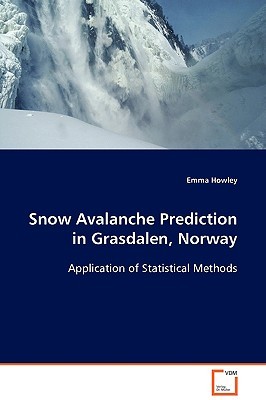
- We will send in 10–14 business days.
- Author: Emma Howley
- Publisher: VDM Verlag
- ISBN-10: 3639071352
- ISBN-13: 9783639071351
- Format: 15.2 x 22.9 x 0.7 cm, minkšti viršeliai
- Language: English
- SAVE -10% with code: EXTRA
Reviews
Description
Snow avalanches are a common hazard in many mountainous environ-ments. As such, it is often necessary to be able to predict these events. In this study detailed analysis of weather parameters in western Norway has established common triggering factors for avalanches in Grasdalen. Two large sets of weather data have been used. A number of wind drift factors have been derived, as several authors consider these to be important. Statistical procedures were applied, including cumulative probability plots and classification trees. The latter highlighted the most important weather parameters used to classify data in terms of dry avalanche days or non avalanche days. Results of these indicate important splitting factors to be various sums of precipitation and the maximum temperature. The combined wind drift factors were con-sidered less important. These results are not in total agreement with previous authors, however, this study serves as a critical appraisal of current statistical methods of avalanche prediction and would be useful for avalanche forecasters and researchers.
EXTRA 10 % discount with code: EXTRA
The promotion ends in 22d.17:32:08
The discount code is valid when purchasing from 10 €. Discounts do not stack.
- Author: Emma Howley
- Publisher: VDM Verlag
- ISBN-10: 3639071352
- ISBN-13: 9783639071351
- Format: 15.2 x 22.9 x 0.7 cm, minkšti viršeliai
- Language: English English
Snow avalanches are a common hazard in many mountainous environ-ments. As such, it is often necessary to be able to predict these events. In this study detailed analysis of weather parameters in western Norway has established common triggering factors for avalanches in Grasdalen. Two large sets of weather data have been used. A number of wind drift factors have been derived, as several authors consider these to be important. Statistical procedures were applied, including cumulative probability plots and classification trees. The latter highlighted the most important weather parameters used to classify data in terms of dry avalanche days or non avalanche days. Results of these indicate important splitting factors to be various sums of precipitation and the maximum temperature. The combined wind drift factors were con-sidered less important. These results are not in total agreement with previous authors, however, this study serves as a critical appraisal of current statistical methods of avalanche prediction and would be useful for avalanche forecasters and researchers.


Reviews